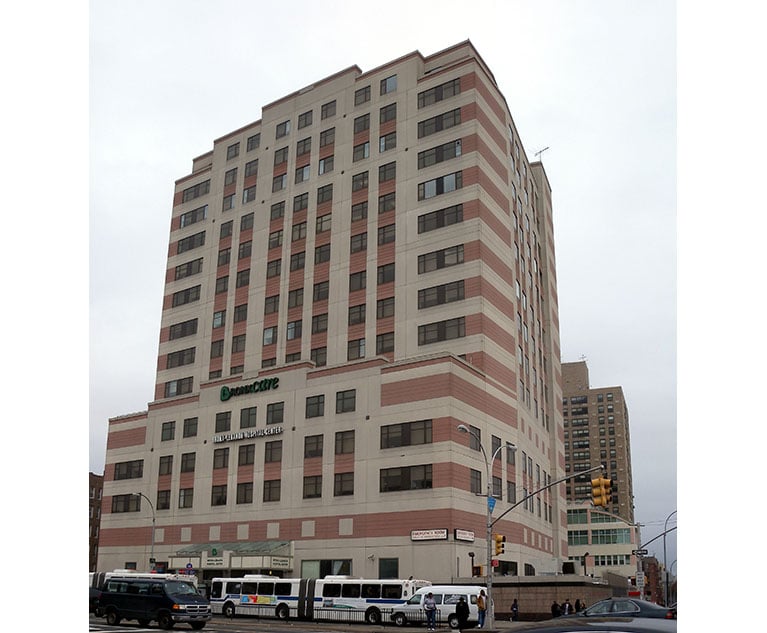 A high-profile law group hasjumped into a fight against the alleged mislabeling of products byfood manufacturers—a move that has the insurance industry on itstoes.
A high-profile law group hasjumped into a fight against the alleged mislabeling of products byfood manufacturers—a move that has the insurance industry on itstoes.
Don Barrett, a Mississippi lawyer who raked in millions ofdollars with suits against the tobacco industry, is looking foranother big payday—this time from food manufacturers he says areoperating in “flagrant disregard of the U.S. Food and DrugAdministration and California law” by misbranding and mislabelingproducts in order to capitalize on a consumer's desire for healthyfoods.
|“Food manufacturers have long realized the FDA has no teeth,”Barrett tells NU. “We don't think what the [food industry]is doing is right, and there is only one way to get theirattention—hit them in the pocketbook.”
|With 27 lawsuits filed so far (mostly in California, where lawsfavor consumers) Barrett's law group is seeking more than smallsettlements and orders to stop the mislabeling of products andingredients.
|“These guys are used to settling for pennies; they are used tohaving these cases, for the most part, quietly disappear,” hesays.
|“That is not what we are looking to do,” Barrett adds. “They arein for a rude awakening. This is a crime.”
|SEEKING BIG-DOLLAR DAMAGES
|Barrett says he seeks major damages for his clients—a pool thathe says numbers into the thousands, thus far—because if amanufacturer is deemed to have misbranded food, “it means they havebeen selling a worthless product,” he declares.
|“It's easy to calculate the overpayment for the sale of anillegal product which is 'worthless,'” he continues. “It is whatthe consumer paid for it. Collectively, it means the total of allsales within the last four years.”
| Should Barrett succeed in hislawsuits against the likes of PepsiCo, General Mills, Heinz andConAgra Foods, damages could theoretically run into the billions ofdollars, considering the annual sales of the products Barrettalleges have been sold illegally.
Should Barrett succeed in hislawsuits against the likes of PepsiCo, General Mills, Heinz andConAgra Foods, damages could theoretically run into the billions ofdollars, considering the annual sales of the products Barrettalleges have been sold illegally.
He also seeks injunctions to stop the sale of products his firmis targeting, as well as to institute massive recalls.
|These class-action cases are not new, but the status of Barrettand the damages he seeks for plaintiffs is. Historically, casesrelated to food mislabeling have sought only to force themanufacturer to “stop it.”
|Stephen Gardner, the director of litigation for the advocacygroup Center for Science in the Public Interest (CSPI), says he hasbeen involved in fighting against food manufacturers for deceptivepractices since the early 1980s.
|Typically the CSPI sends a warning shot—a letter outliningdemands—to manufacturers in an attempt to get them to stop whatthey're doing, unless CSPI is enlisted to take a case by a privateattorney or history dictates an uncooperative company, saysGardner.
|Most of the time this strategy works and no suit is filed. Atrial is “extraordinarily rare,” Gardner says. A settlement isusually reached with a manufacturer, and a pool is established torefund consumers.
|Gardner says he can “do more good” by getting manufacturers tostop wrongful practices rather than “spend $2 million [in alawsuit] to get everyone a $5 refund.”
|INSURANCE IMPLICATIONS: DUTY TO RESPOND?
|Primary Commercial General Liability policies cover advertisinginjury, which is usually limited to violations of right to privacyand libel and/or slander, says Gregory Vallie, director of casualtyfor Minuteman Adjusters (Burns & Wilcox's in-house third-partyadministrator), who notes that such claims are exceedingly rare.“One per year is a lot,” he says.
| “The policy severely limits whatit provides defense and indemnity for,” adds Vallie. “I suppose ifa litigator is creative he can get [insurance] in the door toprovide a defense, but as far as indemnification—[there is] littleto none.”
“The policy severely limits whatit provides defense and indemnity for,” adds Vallie. “I suppose ifa litigator is creative he can get [insurance] in the door toprovide a defense, but as far as indemnification—[there is] littleto none.”
Even Barrett says his lawsuits allege willful acts on the partof manufacturers, and such acts are generally excluded in insurancepolicies.
|Gardner says not once has he ever seen a company disclosewhether insurance is available during pre-trial exchanges ofinformation. “Either they choose not to bring it in, or they don'thave coverage,” he surmises.
|The response of specialized insurance coverage all depends onthe wording of the lawsuit, as well as the wording of individualpolicies, says Linda Pierce, senior vice president and director ofwestern-region claims & loss control for Arthur J. GallagherRisk Management Services.
|Consumer statutes appear to focus on remedies that are not inthe form of monetary damages—and civil penalties aren'tcovered.
|But if monetary damages are sought, “Maybe there's a shot” atclaiming coverage, Pierce says, citing advertising-injury casesinvolving policy exclusions that weren't worded correctly—exposingthe insurer.
|Since there is no standard ISO form for Directors & Officers(D&O) coverage, there also could be openings with that type ofinsurance, but typically such policies are broader only for privatecompanies. Public D&O policies are largely restricted tosecurities claims, Pierce notes.
|“I believe the intent of insurers is not to cover these types of[deceptive labeling and marketing] claims,” she adds.
|TOTAL RECALL
|Bill Harrison, managing director and U.S. Product Recallpractice leader for Marsh, says coverage for recall is triggered byunintentional product contamination—products that make it to theshelves despite stringent quality control.
| Like his insurancepeers, Harrison says coverage depends on policy language andendorsements. Each company has its own base policy, with differentterms and conditions—with additional endorsements tailored to meetclient expectations.
Like his insurancepeers, Harrison says coverage depends on policy language andendorsements. Each company has its own base policy, with differentterms and conditions—with additional endorsements tailored to meetclient expectations.
“I don't know if the policies anticipate these new risks,” hesays. “If the label is wrong and a recall is ordered because aconsumer may be injured—maybe that's a trigger,” says Harrison.
|Many policies, if triggered, would also cover businessinterruption and costs to rebuild reputation and sales.
|Coverage for mislabeling is available now but is limitedcurrently to unintentional printing errors, he adds.
|CARRIERS: RUN TOWARD NEW OPPORTUNITY—OR RUNAWAY?
|Are insurers presented an opportunity with these cases for a newcoverage class? Can insurance be structured for these large foodmanufacturers to better cover the risk of being sued for allegeddeceptive marketing and labeling practices? What about thereputational damage?
|“New types of risk emerge all of the time,” says Harrison. “Youcan always design endorsements to cover new emerging risks. It'lldepend on what occurs. There are many different suits. [Dependingon the results], maybe a need arises for which the industry canstep in.”
|After all, Harrison points out, specialty coverages such asGovernment Recall didn't exist until recently because recalls werea voluntary practice before the European Food Safety Directive in2006 (and now the FDA has gained similar recall powers inthe U.S.).
|Other industry experts asked to contemplate possible industryresponses hedged any predictions due to the fact the lawsuits arepredicated on allegations dependent on loosely regulated claims of“healthy” and “natural.”
|With no federal standards, how does a carrier provide coveragefor a perceived violation? How can it underwrite the risk of bodilyinjury to a class of people who say they were harmed, or could havebeen harmed, by Chobani listing “evaporated cane juice” in itsingredients instead of simply saying the product contains sugar?(Barrett is also suing Chobani.)
|Arthur J. Gallagher's Pierce, a former trial lawyer, firmlystates, “I don't think any insurer in their right mind would wantto cover these.”
|Nan Meyer, managing director of Products Liability for Markel,says lawsuits like Barrett's would “get out of control” ifplaintiffs' attorneys knew insurance coverage was available.
Want to continue reading?
Become a Free PropertyCasualty360 Digital Reader
Your access to unlimited PropertyCasualty360 content isn’t changing.
Once you are an ALM digital member, you’ll receive:
- All PropertyCasualty360.com news coverage, best practices, and in-depth analysis.
- Educational webcasts, resources from industry leaders, and informative newsletters.
- Other award-winning websites including BenefitsPRO.com and ThinkAdvisor.com.
Already have an account? Sign In
© 2024 ALM Global, LLC, All Rights Reserved. Request academic re-use from www.copyright.com. All other uses, submit a request to [email protected]. For more information visit Asset & Logo Licensing.








